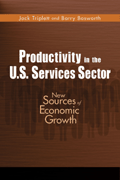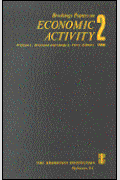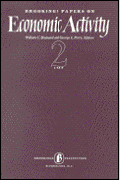Editor’s Note: Mark Muro presented the remarks below following the release of a new assessment on Nevada’s economic opportunities and just after a presentation by Bruce Katz, highlighting ways the state can move forward.
Ok, thanks Bruce—and good afternoon everyone.
I’m Mark Muro, a senior fellow at the Metropolitan Policy Program at Brookings and the co-director with Rob Lang of Brookings Mountain West, and as the project lead on this I wanted to add just a few words to Bruce’s presentation about operationalizing this agenda.
I’ll be brief and then want to call the whole project team up here so we can hear your reactions about what you’ve heard, answer any questions, and talk it over.
I think you on the board and steering committee—rightly—have a lot of questions about implementation, about executing.
You’ve seen a lot of studies, you’ve seen a lot of grand plans, and you’ve seen a lot of drift, squabbling, or inaction. You have been right to push us to think about action plans and how this can go from study to execution.
I want to say just a few words about that before opening this out to conversation.
First, this time is different. AB 449 has already happened and ensures that much is already in motion. We provide recommendations on preparing a state economic development plan, deploying the Catalyst Fund well, and managing dealings with the RDAs. Yet progress on all of those fronts will in some way happen because AB 449 mandates action. Things are going to change because the law says they have to and response to the ideas on the table here is now a matter of administrative action…not just talk.
Similarly, the Knowledge Fund exists—albeit unfunded—and substantial work is already under way to begin tuning state and higher-ed system to the new target industries and niche opportunities. Work has begun.
And yet, it’s true there is a lot to do. Much work lies ahead to reinvigorate and reorient the economy, and I’m sure it seems like a daunting task.
However, emerging from this work I think this study team has a few thoughts about how to address the coming challenges.
First, our work counsels you—I think—to reject grandiose thinking or silver-bullets and get your hands dirty with real-world, piece-by-piece execution.
We have tried to look at your economy as it really is rather than as you might hope it could be.
In the same way, I think the trick now is to focus on the real economy, real market niches, and the basic block-and-tackling of improving your industries firm by firm, expansion by expansion, niche-by-niche, cluster by cluster.
Rome wasn’t built in a day nor will the next Nevada likely be built with flashy 10,000-job firm relocations.
Instead, we are recommending a more grounded approach that calls on you to set a compelling sector strategy, put in place an effective set of aligned efforts, and build from the ground up.
This is why we talk so much about your regions, your documented local clusters, and about revving up the nitty-gritty mechanics of what the cluster guru Michael Porter calls “local things”: local supply chains, local coordinating councils, local trade associations, your business networks, your RDAs, your municipalities, your economic development non-profits, and your university-business-community college exchanges.
In this way, it’s about growing the economy 100 jobs, and 300 jobs, and 600 jobs at a time as you strengthen smart local cluster initiatives; fill documented supply chain gaps; and work out new export or FDI deals.
Likewise, it’s less about grandly “turning the economy around” by announcing you’re going to generate 150,000 in a few years than about seeing if you can expand the Health and Medical Services industry by 15,000 jobs over the next five years or generate 6,000 or 7,000 jobs over that timeframe in Business IT Ecosystems.
In that sense, the next phase should not be about grand schemes but about getting on the same page, breaking the work down into chunks, and getting going. It’s about advancing the ball steadily to add jobs in some of those 30 target areas within the seven broad industries.
And speaking of “getting going”: As you move toward execution, we think this agenda is staged in a way that points to how it can be plausibly implemented.
Sure, there’s a lot here: 37 recommendations supporting 10 strategies aimed at bolstering 30 target niches in seven industries.
But if you look at our three-part agenda, the recommendations within the “Unify” and “Regionalize” themes are either already mandated (produce a state plan; deploy the Catalyst Fund smartly; sharpen up RDA management) or relatively inexpensive (provide competitive matching grants to support bottom up cluster initiatives, export plans, and the like).
At the same time, our “Diversify” set of recs aimed at setting a true state platform for innovation and commercialization; global engagement; and aligned education and workforce training is definitely a heavier lift (although our global engagement ideas are pretty doable).
In light of that I would suggest that this is a very achievable and grounded agenda: You just need to stage it.
Along those lines, there is plenty of important but very achievable work to do right away to put in place a better way of operating across the state. (This is the “system” stuff in “Unify” and “Regionalize).
Yet meanwhile, you need to stage a serious statewide discussion moving forward about the platform work laid our in “Diversify” and for that you have some time before the 2013 legislative session.
In any event, there’s a logical way to move forward steadily to make immediate progress on some very doable and important reforms even as the state had a good conversation about some of the other items.
We do advance a lot but it’s pretty easy to see what should come first and what matters most.
Helping to make that clear is also the point of the policy recs list in the Executive Summary at the end of the Executive Summary and in Appendixes C and D. These lay out action steps and possible job impacts with notes on their degree of immediacy and cost.
I think these tables will be helpful.
And so with that, I’d like to invite the whole team up here—Bruce, my partner Rob Lang from Brookings Mountain West, and Ophelia Yeung and Katherine Johnston from SRI International.
All of these folks have been heavily engaged in this work and we are all delighted to hear your comments on the report and presentation and answer any questions you may have.









Commentary
Unify, Regionalize, Diversify: Remarks From Mark Muro on Nevada’s Economy
November 14, 2011